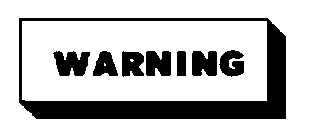TM 1-1520-264-23
1.4.2. Selecting the NDI Method. Factors governing the selection of an inspection method are: accessibility, portability
of equipment, type of suspected damage, material composition of part to be inspected, surface condition, and degree of
sensitivity required for the inspection. In many cases the method selected will depend primarily on accessibility and
practicality. For example, a threaded item that may qualify for eddy current inspection may instead require the
substitution of an ultrasonic inspection due to accessibility constraints. However, the ultrasonic inspection must be
capable of providing equivalent sensitivity. Also, the type of inspection desired may adversely affect adjacent parts.
Inspection methods in this manual were selected in order to provide maximum detection sensitivity while requiring a
minimum of removal or disassembly, and at the same time, protect adjacent areas from damage. Radiographic
inspection is used only to examine areas partly or totally hidden, or where the suspected damage is internal to the part.
Where one method of inspection (primary) reveals an indication of a crack, another method (backup) should be used to
verify if a crack is actually present. Quite often backup procedures are limited to disassembly and a good visual
inspection. Certain cases may arise when another NDI method could be used to prevent needless or complicated
disassembly. For example, a crack in a spar cap may not appear clearly on radiographic film due to cloudiness caused
by sealant or substructure clutter. A backup eddy current or ultrasonic method could be used for verification and if no
indications were observed, disassembly would not be necessary. Whenever a backup method is used, it shall be
specified in every case where the initial damage indication may not be positive proof that a reject condition exists.
1.4.3 Preparation of Helicopter for NDI. Prior to NDI, the helicopter shall be prepared for safe ground maintenance in
accordance with applicable technical manuals listed in Table 1-1.
1.4.4 Preparation of Part or Area for NDI.
Prolonged breathing of vapor from organic solvents, degreasers, or paint thinners is dangerous. Use
respirators in confined areas per Occupational and Environmental Health Respiratory Protection
Program (TB MED 502 (DLAM 1000.2)). Have adequate ventilation. Avoid prolonged skin contact.
Wear rubber gloves and goggles.
All NDI methods require proper cleanliness of the part or area being inspected. Refer to Table 1-1 for the applicable
cleaning and corrosion control manual. The cleaning technique to be used will be determined by the type of foreign
matter present, NDI method to be performed, and if the part is plated, painted, or has a protective coating. Scale and
corrosion shall be removed completely before inspection. If removal of protective coatings, such as paint, phosphate
coatings, black oxide, etc., is required, do not use removal methods that mechanically abrade the surface of the part to
be inspected since this may cause damage or mask over potential surface cracks on the part. Some inspection methods,
by their particular nature, will require that small openings and/or oil holes leading to obscure passages or cavities be
plugged, such as in the case of engine parts. A suitable nonabrasive material (i.e., vaseline, grease, paraffin) should be
used that is soluble in oil and can be readily removed. Effective masking shall be used to protect those components,
such as bearings and certain nonmetallics, that may be damaged by contact with the inspection solution or medium.
1-23


